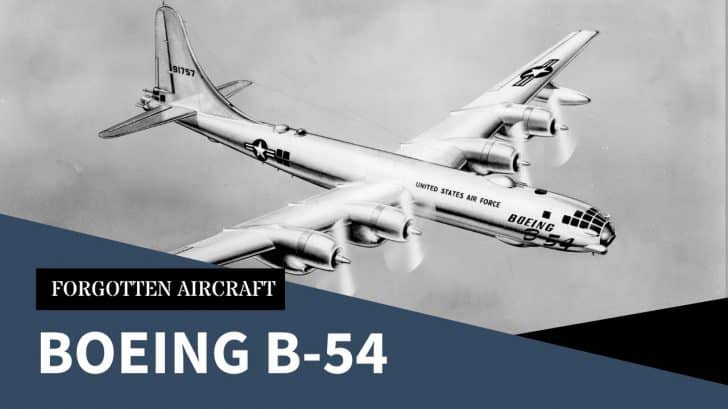The B-29 Superfortress earned its reputation as a legendary aircraft. It was the pinnacle of the WWII heavy bomber, but it’s not without flaws.
Ultimately, Boeing proposed the development of the ultimate variant of the Superfortress, the B-54.
1. It was initially type designated to the B-50 C
However, the changes were significant enough that the plane was eventually considered to be worthy of its designation.
2. It looked the same as its predecessors
However, of course, there were some major differences. The most notable was a change to its engines. The Pratt and Whitney R-4360 of the B-50 was upgraded with a variable discharge turbine or VTT.

The system utilized a nozzle for the turbo supercharger exhaust of the engine, constricting the flow and creating a jet thrust from the nozzle.
3. The B-54 was bigger and heavier than its forbearers
Wingspan was increased by 20 feet to 161 feet. In the same way, the fuselage was also lengthened by a little under 11 feet, making the plane 111 feet or 34 meters long.
4. It was designed to be much more capable than the B-29
The B-29 had a maximum range of 5600 miles, while the B-54 was expected to be over 9,000 miles. In terms of combat capability, the B-54 can cruise 60% further and 22% faster.

5. Everything seemed set, but it never really pushed through
On April 1, 1949, orders were cancelled. The B-54 never saw the light of day. The model under construction, the B-50 C, was broken up, and that was that.


